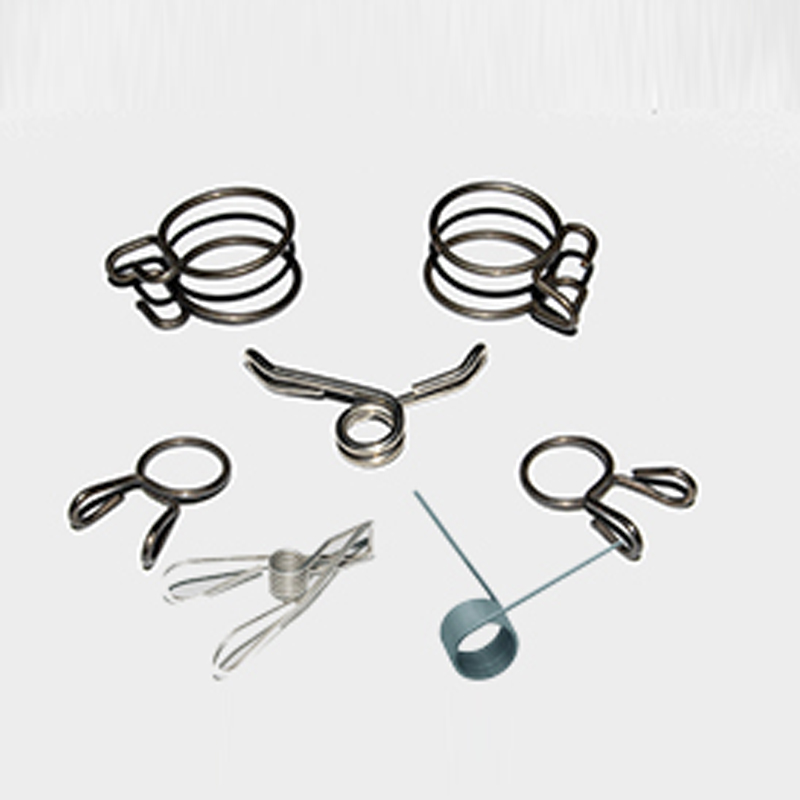
- Mobile Phone
- +8613931874955
- sales@cntcmetal.com
Durable Heavy-Duty Coil Springs for Enhanced Performance and Increased Load Capacity in Various Applications
Understanding Heavy Duty Coil Springs Features and Applications
Heavy duty coil springs are essential components in various applications that require durability, strength, and the ability to withstand heavy loads. These springs are primarily designed to absorb shock and provide support in a range of industrial and automotive uses. In this article, we will explore the features, manufacturing process, and applications of heavy duty coil springs, highlighting their importance in modern engineering.
What are Heavy Duty Coil Springs?
Coil springs are composed of coiled metal wire that is engineered to store and release energy when subjected to stress. Heavy duty coil springs, in particular, are constructed from thicker wire and are characterized by their higher load-bearing capacity compared to standard coil springs. They are commonly made from materials such as chromium-silicon or oil-tempered steel, which ensures their resilience and ability to return to their original shape after being compressed or stretched.
Key Features
1. High Load Capacity As the primary attribute, heavy duty coil springs can handle significantly greater loads than standard springs. This is crucial for applications that involve heavy machinery, vehicles, or any equipment requiring robust support.
2. Durability Heavy duty coil springs are designed to endure extreme conditions, including high temperatures, corrosive environments, and continuous use. Their robust construction aids in resisting fatigue, ensuring long-lasting performance.
3. Versatility These springs can be customized to fit specific requirements, making them suitable for various applications, from automotive suspensions to industrial machinery.
4. Shock Absorption They play a critical role in damping vibrations and shocks, contributing to smoother operation in vehicles and machinery, thus enhancing overall stability and performance.
heavy duty coil springs

Manufacturing Process
The production of heavy duty coil springs involves several steps to ensure quality and performance. Initially, high-grade steel wire is selected based on the desired specifications. The wire is then coiled into the required shape, typically using automated machines that apply precise tension to maintain uniformity. Once coiled, the springs undergo heat treatment to enhance their mechanical properties, such as strength and elasticity.
After heat treatment, springs are often subjected to surface finishing processes, including shot peening and coating, to improve resistance to wear and corrosion. Finally, quality control tests are performed to verify the spring’s load capacity and durability, ensuring they meet industry standards before packaging and delivery.
Applications
The versatility of heavy duty coil springs makes them a critical component in various industries. In the automotive sector, they are widely used in suspension systems, where they support the weight of the vehicle and absorb shocks from the road. This application not only improves ride comfort but also enhances vehicle handling and stability.
In industrial settings, heavy duty coil springs are used in machinery and equipment that require robust support and shock absorption. They are found in construction equipment, manufacturing machinery, and even in conveyor systems, where they help manage heavy loads efficiently.
Additionally, heavy duty coil springs are used in aerospace applications, where reliability and performance are paramount. They are integral components in landing gear systems and other critical aircraft applications, ensuring safety during takeoff and landing.
Conclusion
Heavy duty coil springs are indispensable in numerous applications where strength, durability, and reliability are required. Their ability to absorb shock, support heavy loads, and endure challenging environments makes them vital in industries ranging from automotive to aerospace. Understanding their features and manufacturing processes not only highlights their importance but also assists engineers and manufacturers in selecting the right spring for their specific needs, thereby enhancing operational efficiency and safety.
share:
-
Your Source for Concrete Wall Ties and Masonry AccessoriesNewsJul.10,2025
-
Unlocking the Power of Iron Wire for Every ProjectNewsJul.10,2025
-
Explore Advanced Chain Wire and Stainless Steel Mesh FencingNewsJul.10,2025
-
Discover the Benefits of Annealed Wire ProductsNewsJul.10,2025
-
Discover China Stainless Steel Wire Mesh SolutionsNewsJul.10,2025
-
Build with Confidence Using High-Performance Masonry AccessoriesNewsJul.10,2025
-
Why Sacrificial Formwork Is Redefining Underground ConstructionNewsJun.06,2025



















